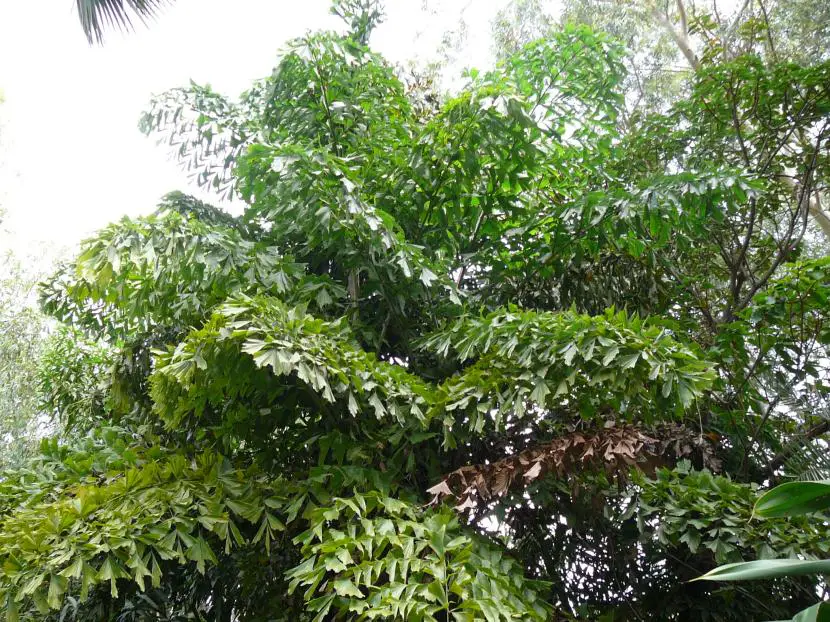

A nose caryota
The fishtail palm tree it is one of the most curious plants of the entire family of palms. Its leaves are very reminiscent of the tails of fish, which is where the common name comes from, but also, once the fruits are ripe, the plant dies. This is something typical of the monocarpics, whose inflorescences are really spectacular.
Belonging to the botanical genus Caryota, it is a plant still rarely seen in gardens. But the truth is that it is very, very interesting. Let us know why.
Fishtail palm tree, unique plants for garden


Caryota are native to Asia. Slow-growing, they have a single trunk, and they can measure up to 12m in height. The leaves are bipinnate, fishtail-shaped, up to 7 meters long. The trunk is robust, whitish in color, with a maximum thickness of 40cm in diameter. They are monoecious plants, that is, there are male and female specimens. Its flowers appear distributed in hanging inflorescences, and the fruit is round, 1,5mm in diameter, red when ripe.
There are a total of 13 species, being the easiest to obtain the A nose caryota, mild caryota and something less the Himalayan Caryota. All three are excellent proposals for designing warm-temperate gardens, with temperatures of up to -2ºCespecially the himalayan c..
Fishtail palm tree care


Caryota obtusa (in the background)
Would you like to have one in your home? This is what you need to look pretty:
- Location: semi-shade, protected from direct sun.
- Ground: prefers rich and well-drained, but can resist limestone and sandy.
- Irrigation: In spring and summer it is recommended to water it every 3-4 days, the rest of the year we will decrease the frequency, and we will water once a week.
- Fertilizer: It is recommended to fertilize with a specific fertilizer for palm trees, or to combine liquid organic fertilizers, such as guano, algae extract or humus, administering one month one, and the next another.
- Transplant: If you want to have it in a pot, it will be transplanted every 2 years, in spring, using a substrate composed of 50% black peat, 30% perlite and 20% coconut fiber.
- Reproduction: by seeds, at a temperature of 20-25ºC. They can be sown directly in a seedbed using vermiculite. In just two months, you will have your little Caryota .
Did you know the fishtail palm tree?
